The Featured Creatures collection provides in-depth profiles of insects, nematodes, arachnids and other organisms relevant to Florida. These profiles are intended for the use of interested laypersons with some knowledge of biology as well as academic audiences.
Introduction
Approximately 60 species of the genus Coquillettidia Dyar are known worldwide. However, the only species of Coquillettidia that occurs in the USA and Canada is the so-called cattail mosquito, Coquillettidia perturbans (Walker) (Figure 1) (Burkett-Cadena 2013). This mosquito species is an inhabitant of permanent freshwater wetlands whose larvae and pupae exhibit the unusual habit of attaching to the roots of emergent aquatic plants, especially cattails (hence the suggested common name) (Morris et al. 1990). The females can be a nuisance to domestic animals and humans when abundant because they are persistent and painful biters (Burkett-Cadena 2013). The cattail mosquito is known to transmit several disease-causing organisms that affect human and animal health. Coquillettidia perturbans is active principally during the early evening hours but is known to bite during the day in shady places where adult mosquitoes are resting (Carpenter and LaCasse 1955).
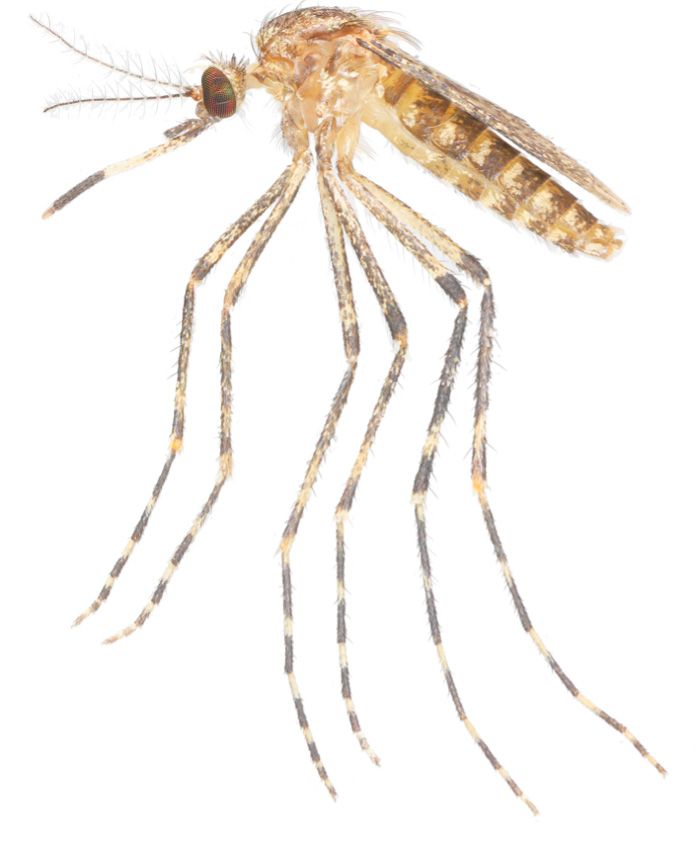
Credit: Nathan Burkett-Cadena, UF/IFAS
Synonymy
Coquillettidia perturbans (Walker 1856)—accepted name
Mansonia (Coquillettidia) perturbans (Walker 1856)
Culex perturbans (Walker 1856)
Culex testaceus (Wulp 1867)
Culex ochropus (Dyar and Knab 1907)
Distribution
Coquillettidia perturbans occurs throughout portions of Canada, the United States, and Mexico (Carpenter and LaCasse 1955). It is widely distributed across the eastern half of the US, southern Canada and several areas in the western US (Figure 2, Burkett-Cadena 2013).
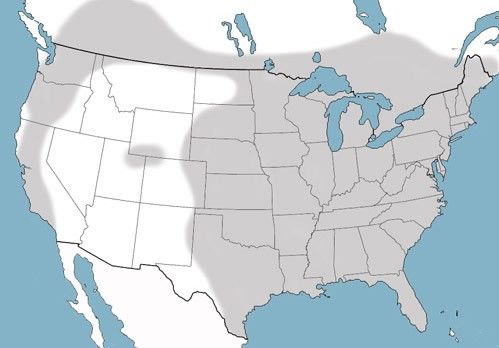
Credit: Nathan Burkett-Cadena, UF/IFAS Florida Medical Entomology Laboratory
Description
Eggs
Eggs are laid on the surface of the water near emergent vegetation (Carpenter and LaCasse 1955). Individual eggs are elongate and white in color initially but darken within one to two hours after being laid. Females attach individual eggs together as they are deposited to form a floating raft (Figure 3) (Carpenter and LaCasse 1955).
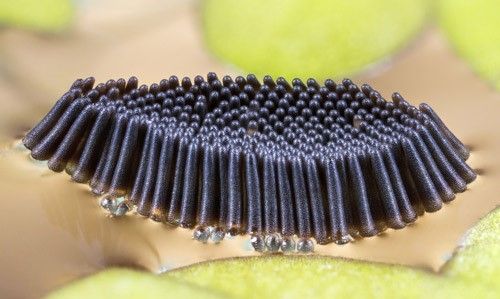
Credit: S. L. Doggett, Department of Medical Entomology, NSW, Australia
Larvae
Mature larvae of Coquillettidia perturbans are grayish white in color and have long, whip like antennae, each bearing a large branched seta (Figure 4, Burkett-Cadena 2013). The head is much wider than it is long, and the comb on the eighth abdominal segment has 8–15 thorn-shaped scales. Unlike most mosquitoes that obtain oxygen at the water surface via the siphon (air tube), larvae of Coquillettidia perturbans have a heavily sclerotized siphon that resembles a short, pointed thorn. The saw-like projections on the tip of the siphon are used to pierce the hollow roots of submersed plant stems (especially cattails in the genus Typha) and other aquatic plants for respiration (Figures 4 and 5) (Carpenter and LaCasse 1955; Burkett-Cadena 2013).

Credit: Nathan Burkett-Cadena, UF/IFAS Florida Medical Entomology Laboratory
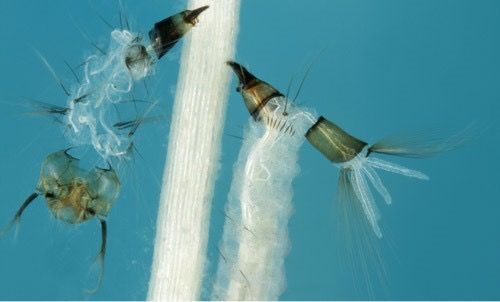
Credit: S. L. Doggett, Department of Medical Entomology, NSW, Australia
Pupae
Pupae are a non-feeding transitional stage between the larval and adult stages (Figure 4). There are two body regions in the pupal stage, the cephalothorax (fused head and thorax) and an elongated abdomen with movable segments terminating in a pair of paddles that are used for swimming (Carpenter and LaCasse 1955). Two short, pointed appendages (trumpets) project from the dorsal cephalothorax provide the openings to the respiratory system. Pupae of Coquillettidia perturbans insert their pointed tips of the trumpets into the hollow, air-filled roots or submersed stems of cattails and other aquatic plants to obtain their oxygen.
Adults
Adults of Coquillettidia perturbans are medium-sized mosquitoes with a "salt and pepper" appearance due to the body being covered in patches of white, black, and brown scales (Figure 1 and 6). The proboscis (elongate mouthparts) is dark scaled with a broad median band of pale scales. The dorsal surface of the thorax has golden and brown scales. The abdomen in females is bluntly rounded terminally, and mostly dark scaled with lateral patches of pale scales on each segment. The tibia and tarsomere 1 of each leg has a median band of pale scales that is unique to this species in North America (Figures 1 and 6). The wing veins are covered with broad tear drop-shaped scales, that are dark or light-colored giving the wing a speckled appearance (Burkett-Cadena 2013).
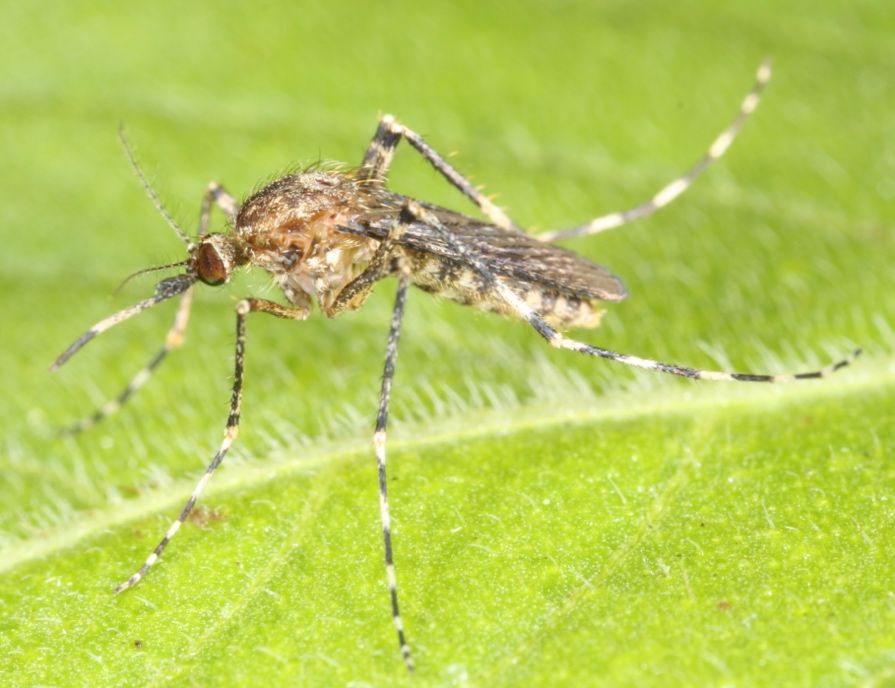
Credit: Nathan Burkett-Cadena, UF/IFAS Florida Medical Entomology Laboratory
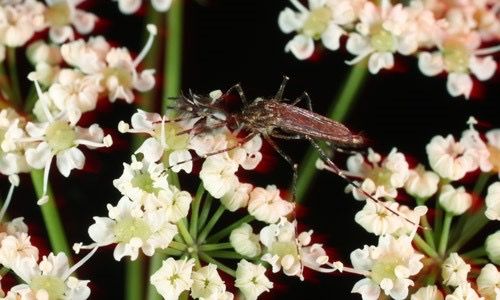
Credit: Nathan Burkett-Cadena, UF/IFAS Florida Medical Entomology Laboratory
Life Cycle and Biology
Females deposit 150–350 eggs on or near the leaves of aquatic plants (Smith and McIver 1984), particularly cattails. First-instar (newly hatched) larvae seek out and attach themselves to the roots or submersed stems of aquatic plants where they remain to complete their development (Carpenter and LaCasse 1955). However, larvae can readily detach and burrow into the sediment if disturbed (Darsie and Hutchinson 2009). They do not need to rise to the surface of the water to breathe like most other mosquito larvae do, because they obtain oxygen directly from the plant. The larval stage has four instars, the durations of which vary greatly depending upon temperature, latitude, and food availability (Lounibos and Escher 1983). Bacteria, particulates, protozoa and algae were found to comprise the majority of particulate food ingested by the cattail mosquito (Merritt et al. 1990). In the northern parts of its range, it overwinters as immature or mature larvae; synchronous emergence of adults generally occurs the following spring or early summer (Carpenter and LaCasse 1955; Lewis and Bennett 1980).
In Florida, adults can be encountered year-round but peak abundance occurs from June through September (Burkett-Cadena 2013). In Canada, Coquillettidia perturbans has a single generation per year; the larval stage can last up to nine months (Lewis and Bennett 1980; Allan et al. 1981). In contrast, there are two or three broadly overlapping generations in Florida (Lounibos and Escher 1983). The length of the pupal stage is quite variable, lasting up to several weeks. After adults emerge from the pupal stage, the wings will harden within 24 hours, and they will be able to fly soon thereafter (Mullen and Durden 2009). The sex ratio of males and females is approximately 1:1. The life span of the adult is approximately one to two months with females tending to outlive their male counterparts.
Hosts
Immature Stages
Although mainly associated with cattails (Typha spp.), larvae and pupae of Coquillettidia perturbans are found in association with the submersed roots of diverse aquatic plants, all of which grow in humus-rich hydric soils (Morris et al. 1990).
Adults
Males feed exclusively on flower nectars (Figure 7) and other plant fluids. Females also feed on flower nectar for nutrition, but feed on blood of vertebrate animals, which is essential for their egg production (Figure 6). Females of Coquillettidia perturbans have been reported to bite and feed on the blood of a wide variety of wild and domestic birds and mammals, including chickens, quail, cattle, rabbits, armadillos, raccoons, opossums, and humans (Edman 1971).
Medical Importance
Females of Coquillettidia perturbans are vicious biters, capable of penetrating clothing. They also are strong fliers, able to travel up to five miles. In addition to being a nuisance due to their biting behavior, this mosquito is known to transmit two major arboviruses, West Nile virus and eastern equine encephalomyelitis virus (Darsie and Hutchinson 1990; CDC WNV 2016). Although there are equine vaccines for these viruses, currently there are no vaccines available for humans. Protective clothing and mosquito repellent should be used when outdoors to avoid mosquito bites (ENY-671, https://edis.ifas.ufl.edu/publication/IN419).
Management
Because larvae and pupae of Coquillettidia and Mansonia mosquitoes do not need to breathe at the water surface, they are difficult to control with conventional larvicides. Immature stages can be sampled by pulling up aquatic plants (cattails, sedges, pickerelweed, etc.); washing them in a white pan of water; and examining the sediment and debris for the presence of larvae or pupae (Dame and Fasulo 2002; MMCA 2002). Cattails (Typha spp.) are native aquatic plants that can exhibit invasive characteristics in disturbed wetlands. Because they are the preferred developmental host of Coquillettidia perturbans (Walker), removal of excessive cattail growth (source reduction) often is the only effective and economical long-term method of management.
Selected References
Allan SA, Surgeoner GA, Helson BV, Pengelly DH. 1981. Seasonal activity of Mansonia perturbans adults (Diptera: Culicidae) in southwestern Ontario. Canadian Entomologist 113: 13345–139.
Burkett-Cadena ND. 2013. Mosquitoes of the southeastern United States. The University of Alabama Press, Tuscaloosa, Alabama, United States. 188 pp.
Carpenter SJ, LaCasse WJ. 1955. Mosquitoes of North America (North of Mexico), University of California Press, Berkeley, California, USA. 360 pp.
Centers for Disease Control West Nile Virus (CDC WNV). 2016. List of mosquitoes in which West Nile virus has been detected. https://www.cdc.gov/mosquitoes/media/pdfs/2024/04/MosquitoSpecies1999-2016.pdf
Dame DA, Fasulo TR. 2002. Public-Health Pesticide Applicator Training Manual, SP318, Chapter 3. UF/IFAS. (No longer available online.)
Darsie RF, Hutchinson ML. 2009. The Mosquitoes of Pennsylvania. Technical Bulletin #2009-001 of the Pennsylvania Vector Control Association. 191 pp.
Edman JD. 1971. Host-feeding patterns of Florida mosquitoes I. Aedes, Anopheles, Coquillettidia, Mansonia and Psorophora. Journal of Medical Entomology 8: 687–695.
Integrated Taxonomic Information System (ITIS). 2017. https://www.itis.gov/ (13 November 2017).
Lewis DJ, Bennett GF. 1980. Observations on the biology of Mansonia perturbans (Walker) (Diptera: Culicidae) in the Nova Scotia-New Brunswick border region. Canadian Journal Zoology 58: 2084–2088.
Lounibos LP, Escher RL. 1983. Seasonality and sampling of Coquillettidia perturbans (Diptera: Culicidae) in south Florida. Environmental Entomology 4: 1087–93.
Merritt RW, Olds EJ, Walker ED. 1990. Natural food and feeding behavior of Coquillettidia perturbans larvae. Journal of the American Mosquito Control Association. 6:35–42.
Morris CD, Callahan JL, Lewis RH. 1990. Distribution and abundance of larval Coquillettidia perturbans in a Florida freshwater marsh. Journal of the American Mosquito Control Association 6: 452-460.
Mullen GR, Durden LA (Eds.). 2009. Medical and Veterinary Entomology, Second Edition. Elsevier, Inc., Burlington, MA. 637 pp.
Smith BP, McIver SB. 1984. The impact of Arrenurus danbyensis Mullen (Acari: Prostigmata; Arrenuridae) on a population of Coquillettidia perturbans (Walker) (Diptera: Culicidae). Canadian Journal of Zoology 62: 1121-34.